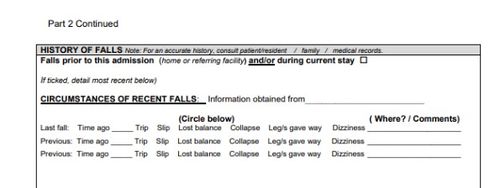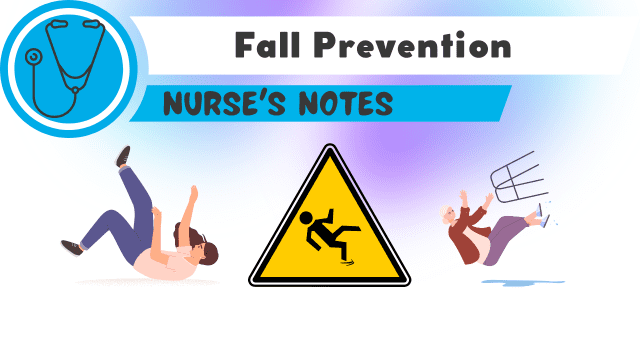The Buzz on Dementia Fall Risk
The Buzz on Dementia Fall Risk
Blog Article
Indicators on Dementia Fall Risk You Should Know
Table of ContentsAbout Dementia Fall RiskDementia Fall Risk Things To Know Before You Get ThisThe Greatest Guide To Dementia Fall RiskThe Buzz on Dementia Fall Risk
A loss danger evaluation checks to see exactly how most likely it is that you will certainly fall. It is mostly provided for older grownups. The evaluation typically includes: This consists of a collection of inquiries regarding your overall health and if you have actually had previous falls or issues with balance, standing, and/or strolling. These devices evaluate your strength, balance, and stride (the means you walk).Interventions are suggestions that might reduce your risk of dropping. STEADI includes 3 actions: you for your threat of falling for your risk factors that can be enhanced to attempt to stop drops (for instance, balance troubles, damaged vision) to lower your risk of falling by utilizing reliable strategies (for example, supplying education and learning and sources), you may be asked several concerns including: Have you dropped in the past year? Are you fretted concerning dropping?
If it takes you 12 seconds or more, it might suggest you are at greater threat for a loss. This examination checks toughness and equilibrium.
The settings will get more difficult as you go. Stand with your feet side-by-side. Move one foot midway onward, so the instep is touching the huge toe of your other foot. Move one foot totally before the various other, so the toes are touching the heel of your other foot.
All about Dementia Fall Risk
The majority of drops take place as a result of several contributing aspects; therefore, handling the danger of falling begins with recognizing the variables that contribute to fall risk - Dementia Fall Risk. A few of the most pertinent risk aspects consist of: History of prior fallsChronic clinical conditionsAcute illnessImpaired stride and balance, lower extremity weaknessCognitive impairmentChanges in visionCertain high-risk medicines and polypharmacyEnvironmental variables can also boost the threat for drops, including: Inadequate lightingUneven or damaged flooringWet or slippery floorsMissing or damaged hand rails and order barsDamaged or improperly fitted devices, such as beds, mobility devices, or walkersImproper use assistive devicesInadequate guidance of individuals living in the NF, consisting of those who show hostile behaviorsA successful loss threat management program requires a detailed clinical assessment, with input from all members of the interdisciplinary team

The treatment strategy must likewise consist of interventions that are system-based, such as those that promote a risk-free atmosphere (suitable illumination, handrails, get bars, etc). The effectiveness of the interventions should be examined regularly, and the treatment strategy modified as essential to mirror modifications in the fall danger evaluation. Executing an useful reference autumn risk management system using evidence-based best technique can lower the prevalence of drops in the NF, while restricting the capacity for fall-related injuries.
The 8-Second Trick For Dementia Fall Risk
The AGS/BGS standard recommends evaluating all adults matured 65 years and older for fall danger annually. This testing consists of asking people whether they have actually fallen 2 or more times in the previous year or sought clinical focus for an autumn, or, if they have actually not fallen, whether they really feel unsteady when walking.
Individuals who have actually dropped as soon as without injury must have their equilibrium and gait reviewed; those with gait or find out here equilibrium abnormalities must obtain extra analysis. A history of 1 autumn without injury and without stride or balance issues does not necessitate additional analysis past continued annual loss risk screening. Dementia Fall Risk. An autumn threat assessment is needed as component of the Welcome to Medicare examination

The Dementia Fall Risk Ideas
Documenting a drops background is one of the high quality indicators for fall avoidance and monitoring. Psychoactive drugs in certain are independent forecasters of falls.
Postural hypotension can frequently be reduced by decreasing the dose of blood pressurelowering medications and/or quiting medications that have orthostatic hypotension as a negative effects. Use above-the-knee support pipe and copulating the head of the bed boosted might also reduce postural decreases in high blood pressure. The preferred aspects of a fall-focused checkup are received Box 1.

A pull time more than or equal to 12 seconds recommends high fall danger. The 30-Second Chair Stand examination analyzes lower extremity stamina and equilibrium. Being incapable to stand up from a chair of knee height without utilizing one's arms shows increased fall danger. The 4-Stage Equilibrium test examines fixed balance by having the client stand in 4 settings, each considerably more challenging.
Report this page